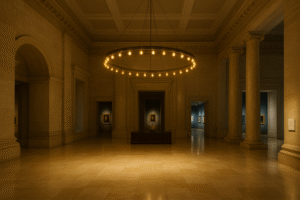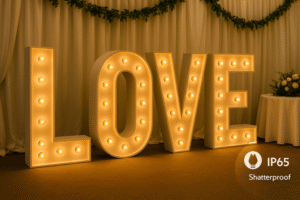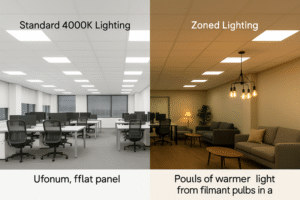Struggling with old stage lights that are hot, heavy, and consume enormous amounts of power? These limitations stifle creative possibilities, drive up operational costs, and create an uncomfortable environment for performers.
LED technology is revolutionizing stage lighting by offering unparalleled control over color and intensity, exceptional durability, and energy efficiency. This allows for more dynamic, creative, and sustainable lighting designs for any performance, from theaters to concerts.
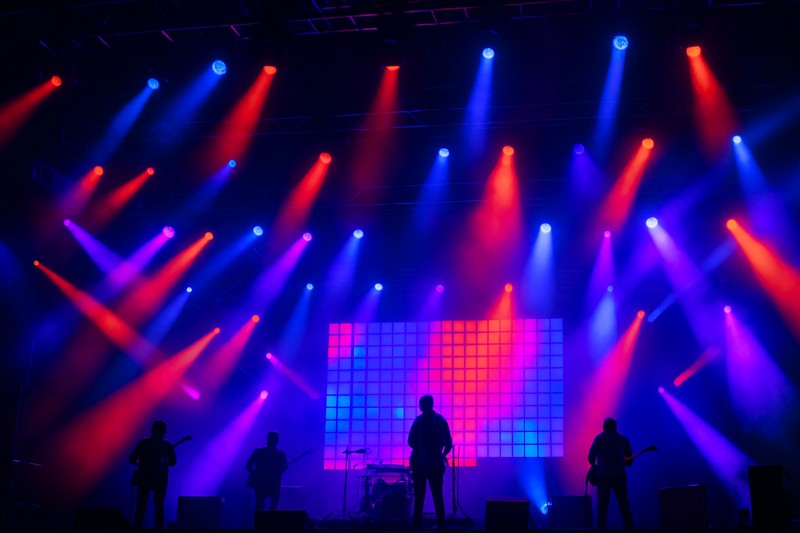
In my role, I've seen how lighting transforms a space, but nowhere is this more true than on a stage. While we primarily manufacture bulbs for architectural and decorative use, the core technology—color quality, control, and durability—is exactly what stage designers crave. A stage is an extreme environment, demanding fixtures that are not only brilliant and versatile but also robust and reliable. The principles that make an LED bulb great for an outdoor installation or a hotel lobby are amplified on stage. Let’s dive into how the specific advancements in LED technology are giving designers a powerful new toolkit.
How Can You Create Mood and Emotion with LED Color?
Are you finding it difficult to create the perfect emotional tone for a scene? Traditional lighting with gels is cumbersome, offering a limited palette that is slow to change and fades over time.
LEDs provide precise and instant control over color. With options for various color temperatures and high color rendering (CRI), designers can craft specific moods and ensure costumes and skin tones appear natural and vibrant under the lights.
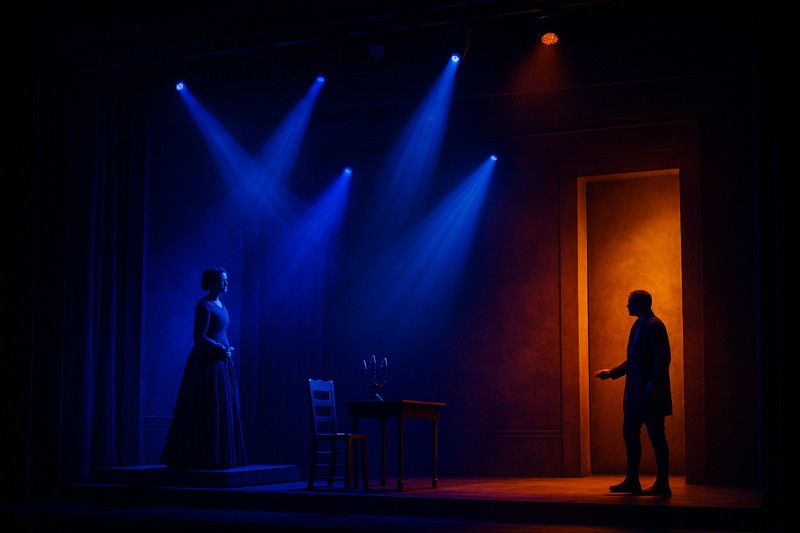
Color is the language of light, and on stage, it tells the story. The ability to shift from a cold, sterile 4000K to a warm, intimate 2200K or 3000K can change the entire feeling of a scene in an instant. We see this in our own product line; an amber-coated bulb creates a completely different feel than a frosted white one. A good stage light must also render colors accurately. That's why a high Color Rendering Index (CRI) of over 80 is critical, ensuring the rich colors of a costume or the subtle tones of an actor's face are seen as the director intended. Beyond simple color temperature, modern LEDs can produce deeply saturated colors or even unique decorative effects, like the metallic rainbow or petrol finishes on some bulbs, which can be incorporated into the set design itself as practical, on-stage light sources.
The Core Elements of LED Color Design
| Feature | Stage Application | Impact on Performance |
|---|---|---|
| Variable CCT1 | Shifting between warm (2200K, 3000K) and cool (4000K) light to match scenes. | Instantly changes the mood from intimate and cozy to stark and clinical. |
| High CRI (>80)2 | Accurately lighting actors and costumes. | Ensures the audience sees true-to-life colors, preserving the integrity of the design. |
| Decorative Finishes | Using bulbs with amber, smoke, or rainbow finishes as part of the set. | Turns light sources into scenic elements that contribute to the visual narrative. |
What Makes LEDs So Flexible for Dynamic Stage Effects?
Are your lighting transitions clunky and slow? Relying on manual fixture adjustments or separate dimmer racks makes it hard to create the fluid, dynamic visual sequences that modern productions demand.
LED fixtures offer incredible flexibility through integrated features like dimming capabilities and adjustable housings. This allows for smooth intensity changes and precise light beam positioning, creating dynamic effects with ease.
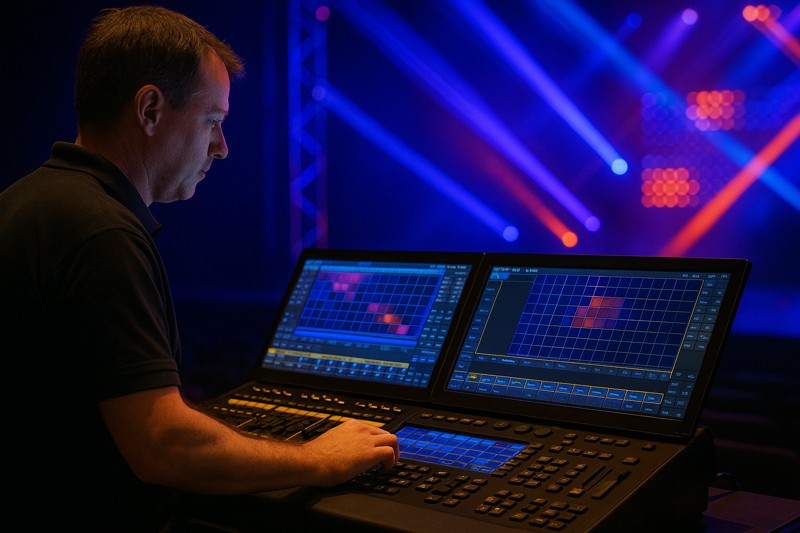
A stage is not static, and the lighting should not be either. The ability to control light with precision is what separates good lighting from great lighting. Many of our decorative LED bulbs are "dimbaar" (dimmable), a feature that is essential on stage for creating fades and adjusting intensity smoothly without color shifts. Furthermore, physical adjustability is key. Fixtures with an adjustable body ("corpo luce orientabile") or a directional diffuser ("diffusore direzionabile") allow designers to focus light exactly where it's needed, highlighting a performer or a specific part of the set. Some advanced fixtures even feature independent control over multiple light sources within a single unit, which is perfect for creating complex layered looks from one position. This integrated control streamlines the design process and opens up a new world of dynamic possibilities.
Key Control Features in Modern LEDs
- Dimming3: Smoothly fading lights in and out to match the pacing of the performance is a fundamental need, and modern dimmable LEDs excel at this.
- Adjustability: The ability to physically aim the light beam is crucial for isolating performers and creating focused pools of light.
- Independent Source Control4: Some fixtures allow for different elements to be controlled separately, enabling designers to create multiple effects from a single lamp, simplifying rigging and programming.
Are LEDs Tough Enough for the Demands of the Stage?
Do you worry about lights failing mid-show due to heat, weather, or physical stress? The demanding environment of live performance, especially in outdoor or touring productions, requires exceptionally reliable equipment.
Yes, LEDs are built for durability. They have incredibly long lifespans, are resistant to thermal shock, and many are built with high IP ratings, making them reliable for any performance environment, from indoor theaters to outdoor festivals.
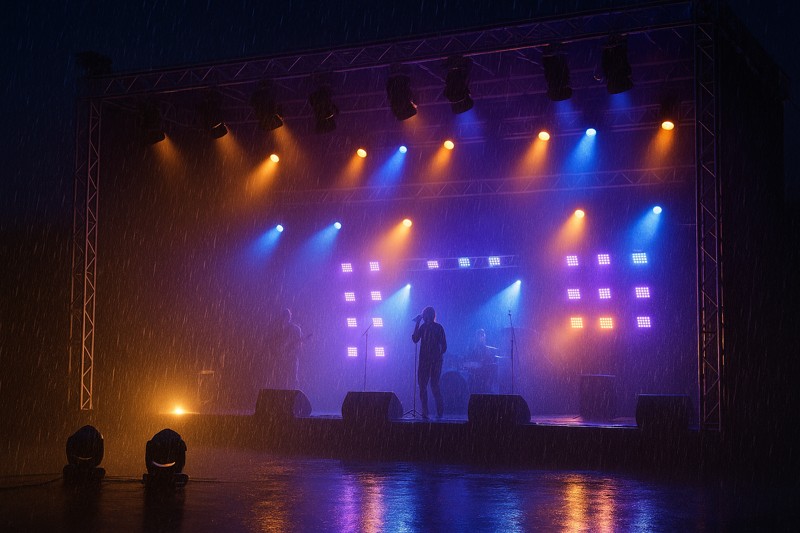
Reliability is non-negotiable in live performance. A fixture failure can ruin a critical moment. One of the greatest advantages of LED technology is its remarkable lifespan, with many sources rated for 20,000, or even 50,000 hours of use. This drastically reduces maintenance needs compared to old halogen lamps. For outdoor stages or shows with special effects involving water or fog, a fixture's Ingress Protection (IP) rating is crucial. Fixtures with high ratings like IP65, IP66, or even IP68 are protected against dust and water, ensuring they perform safely and reliably no matter the conditions. Furthermore, many high-performance LEDs are engineered to withstand extreme temperature fluctuations, from -60° C to +90° C, making them perfect for any climate. This level of durability gives designers and technicians peace of mind.
Built for the Toughest Conditions
| Durability Feature | Benefit for Stage Use |
|---|---|
| Long Lifespan5 | Dramatically reduces bulb changes and maintenance costs (up to 50,000 hours). |
| High IP Rating6 | Ensures safe, reliable operation in dusty, foggy, or wet conditions (IP65, IP66, IP68). |
| Thermal Resistance | Operates effectively in extreme heat or cold, ideal for outdoor venues and touring. |
How Do Different LED Fixtures Serve Specific Stage Roles?
Is your lighting design "one-size-fits-all"? Using the same type of light for every purpose—from broad washes to tight spotlights—results in a flat and uninspired look on stage.
A successful stage design uses a variety of LED fixtures for specific tasks. Low-profile in-ground lights can be used for uplighting, adjustable spotlights for highlighting performers, and decorative bulbs as scenic elements to create a layered and visually rich environment.
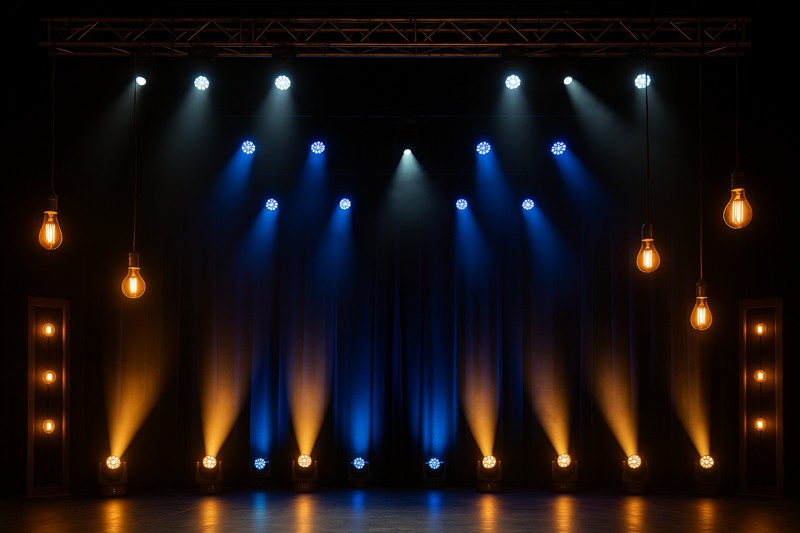
Layering is the key to compelling lighting design. Different lights perform different jobs. For instance, compact, in-ground fixtures with an IP68 rating can be embedded directly into the stage floor for powerful uplighting effects that add drama and dimension. Adjustable spotlights, often using a GU10 base, can serve as key lights to illuminate performers or as accent lights to draw attention to set pieces. But lighting can also be part of the scenery itself. Imagine a bar scene with decorative amber globe or staff bulbs hanging over the counter, or a bedroom with a practical lamp on a nightstand. Using these "practicals" makes the world of the stage feel more real and lived-in. The wide variety of available LED lamps, from small G9 capsules to standard E27 bulbs, means that almost any type of fixture, new or old, can be used in the design.
A Toolbox of Stage Lighting Fixtures
| Fixture Type (Example) | Common Role on Stage | Desired Effect |
|---|---|---|
| In-ground Lights7 | Uplighting for scenery, backdrops, or performers from below. | Creates dramatic shadows, adds height and mystery. |
| Adjustable Spotlights8 | Key light, back light, or specials to highlight a specific area. | Focuses audience attention and separates an object from its background. |
| Decorative Bulbs | On-stage practicals (e.g., chandeliers, table lamps) that are part of the set. | Builds a realistic, immersive environment and adds visual texture. |
Conclusion
LED lighting has fundamentally transformed stage design by providing creative tools that are more colorful, controllable, and durable than ever before, empowering designers to create truly unforgettable visual experiences.
Understanding Variable CCT can enhance your lighting design skills, making your scenes more dynamic and engaging. ↩
Exploring High CRI will help you appreciate how accurate color rendering can elevate the quality of performances. ↩
Explore how dimming enhances performance and ambiance in lighting design. ↩
Learn about the advantages of independent source control for versatile lighting effects. ↩
Discover how long-lasting LED lights can save you money and reduce maintenance efforts. ↩
Learn about the importance of IP ratings for ensuring safety and reliability in challenging environments. ↩
Learn about the dramatic effects in-ground lights can create, adding depth and intrigue to performances. ↩
Explore how adjustable spotlights can enhance focus and create stunning visual effects on stage. ↩





